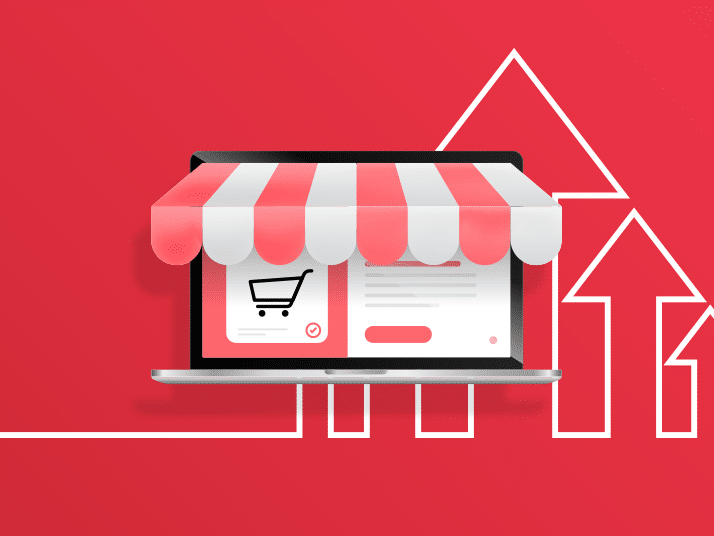Conversion Rate Optimization: Boosting Sales & Revenue Online
You have finally launched your online store, filled with amazing products that you know people will love. Then, you sit back and wait for the sales to come rolling in. But days turn into weeks, and weeks turn into months, and your store isn’t getting the attention it deserves. Don’t worry, you’re not alone. Many ecommerce businesses face this challenge. So, the key to turning things around lies in the art of conversion rate optimization (CRO).
Why is Conversion Rate Optimization (CRO) Important for Ecommerce Businesses?
Basically, conversion rate optimization is the secret ingredient that can transform your online store from a ghost town into a bustling marketplace. Simply put, it is the process of improving your website to increase the percentage of visitors who make a purchase or take a desired action. Therefore, by optimizing your conversion rate, you can drive more sales and ultimately grow your business.
Understanding the Basics of Conversion Rate Optimization
To effectively optimize your conversion rate, you need to understand the basics. Firstly, start by analyzing your website’s data to identify areas for improvement. Look at metrics such as bounce rate, average time on page, and conversion funnel drop-offs. This data will give you insights into the user experience and help you pinpoint where visitors are getting stuck or losing interest.
Once you have identified the areas that need improvement, it’s time to implement changes. For example, this could include improving the website’s navigation, simplifying the checkout process, or optimizing product pages. Remember, the goal is to create a seamless and enjoyable experience for your customers that ultimately leads to more conversions.
Key Metrics to Track for Conversion Rate Optimization
In order to measure the success of your conversion rate optimization efforts, it’s important to track key metrics. These metrics will give you a clear picture of how your website is performing and where there is room for improvement. Some of the key metrics to track include:
- Conversion Rate: This is the percentage of visitors who make a purchase or complete a desired action on your website.
- Bounce Rate: This metric measures the percentage of visitors who land on your website and leave without taking any further action.
- Average Order Value: This metric tells you the average amount spent by customers in a single transaction.
- Cart Abandonment Rate: This measures the percentage of visitors who add items to their cart but leave without completing the purchase.
- Customer Lifetime Value: This metric calculates the total value a customer brings to your business over their lifetime.
As a result, by tracking these metrics, you can identify trends and make data-driven decisions to improve your conversion rate.
Best Practices for Conversion Rate Optimization
Now that you understand the importance of conversion rate optimization (CRO) and the key metrics to track, let’s dive into some best practices to help you optimize your ecommerce website:
1. Streamline the Checkout Process
One of the biggest barriers to conversion is a lengthy and complicated checkout process. Therefore, simplify the process by reducing the number of steps required and minimizing form fields. Offer guest checkout options and provide clear progress indicators to keep customers engaged.
2. Optimize Product Pages
Product pages play a crucial role in convincing customers to make a purchase. Use high-quality product images, compelling descriptions, and customer reviews to showcase the value of your products. Make sure the “Add to Cart” button is prominently displayed and easily accessible.
3. Personalize the User Experience
Tailor the user experience to the individual needs and preferences of your customers. Use tools like behavioral tracking and personalization software to deliver relevant product recommendations, customized offers, and personalized messaging. This will create a more engaging and personalized shopping experience.
4. Improve Website Speed
A slow-loading website can significantly impact your conversion rate. Optimize your website’s performance by minimizing file sizes, leveraging browser caching, and using content delivery networks (CDNs). A fast and responsive website will keep visitors engaged and more likely to convert.
5. Implement A/B Testing
A/B testing is a powerful technique that allows you to compare two versions of a webpage to determine which one performs better. Test different elements such as headlines, call-to-action buttons, and color schemes to find the winning combination that drives higher conversions. Continuously iterate and optimize based on the results of your tests.
Tools and Resources for Ecommerce Conversion Optimization
To make your conversion rate optimization efforts more effective, there are several tools and resources available to assist you:
- Google Analytics: This free tool provides valuable insights into your website’s performance and user behavior, helping you identify areas for improvement.
- Heatmap Tools: Tools like Hotjar and Crazy Egg offer heatmaps that visually represent user interactions on your website, allowing you to identify areas of high engagement and areas that need improvement.
- A/B Testing Platforms: Tools like Optimizely and VWO enable you to easily conduct A/B tests to optimize your website and increase conversions.
- User Feedback Surveys: Tools like SurveyMonkey and Qualaroo allow you to gather feedback directly from your website visitors, helping you understand their pain points and preferences.
By leveraging these tools and resources, you can make informed decisions and continuously improve your conversion rate.
The Role of UX Design in Conversion Rate Optimization
User experience (UX) design plays a crucial role in conversion rate optimization. It focuses on creating a seamless and intuitive experience for your website visitors. A well-designed website that is easy to navigate, visually appealing, and optimized for mobile devices will enhance the user experience and increase the likelihood of conversions.
Consider the following UX design principles when optimizing your ecommerce website:
- Clear Navigation: Make it easy for visitors to find what they are looking for by implementing a clear and intuitive navigation menu.
- Mobile Optimization: With the increasing use of mobile devices for online shopping, ensure your website is fully responsive and mobile-friendly.
- Visual Hierarchy: Use visual cues such as color, size, and placement to guide visitors’ attention to important elements, such as call-to-action buttons.
- Consistency: Maintain a consistent design throughout your website to create a cohesive and familiar experience for visitors.
By incorporating UX design principles into your conversion rate optimization strategy, you can create a user-friendly website that encourages conversions.
A/B Testing for Ecommerce Conversion Rate Optimization
A/B testing is a powerful technique that allows you to compare two versions of a webpage to determine which one performs better. This testing methodology is particularly useful for ecommerce businesses looking to optimize their conversion rates. Here’s how you can implement A/B testing effectively:
- Identify the Element to Test: Start by identifying the specific element on your webpage that you want to test. This could be the headline, call-to-action button, product image, or even the color scheme.
- Create Variations: Create two or more variations of the element you want to test. For example, if you are testing a call-to-action button, one variation could have a green button and another variation could have a blue button.
- Split Traffic: Split your website traffic evenly between the different variations. This can be done using A/B testing platforms like Optimizely or VWO.
- Analyze the Results: Monitor the performance of each variation by tracking key metrics such as conversion rate, average order value, and bounce rate. Analyze the data to determine which variation performs better.
- Implement the Winning Variation: Once you have identified the winning variation, implement it on your website. Continuously iterate and test other elements to further optimize your conversion rate.
By using A/B testing, you can make data-driven decisions and continuously improve your website’s performance and conversion rate.
Conversion Rate Optimization Services for Ecommerce Businesses
Optimizing your ecommerce conversion rate can be a complex and time-consuming process. If you don’t have the resources or expertise to handle it in-house, you can consider hiring conversion rate optimization services from Chili!
Our agency specializes in helping businesses improve their conversion rates and drive more sales. We have the knowledge, experience, and tools to identify areas for improvement and implement effective strategies to boost conversions.
When choosing a conversion rate optimization service, consider the following factors:
- Experience: Look for a service provider with a proven track record in optimizing conversion rates for ecommerce businesses.
- Expertise: Ensure the service provider has expertise in your specific industry and understands the unique challenges faced by ecommerce businesses.
- Transparent Reporting: Choose a service that provides regular reports and transparent communication, allowing you to track the progress of your conversion rate optimization efforts.
- Customized Strategies: Look for a service provider that offers customized strategies tailored to your business goals and target audience.
Remember, investing in professional conversion rate optimization services can yield significant returns by driving more sales and growing your ecommerce business.
Unlocking the Potential of Your Ecommerce Business through Conversion Rate Optimization
In today’s competitive ecommerce landscape, conversion rate optimization is crucial for the success of your online store. By understanding the basics, tracking key metrics, and implementing best practices, you can optimize your website to increase conversions and drive more sales.
Leverage tools and resources, consider the role of UX design, and use A/B testing to continuously improve your conversion rate. If needed, don’t hesitate to enlist the help of conversion rate optimization services to unlock the full potential of your ecommerce business.
Remember, the art of conversion rate optimization is a journey, so be patient and persistent in your efforts. Happy optimizing!
Ready to boost your ecommerce conversion rate? Contact our marketing experts today for a free consultation!



Join the discussion - 0 Comment